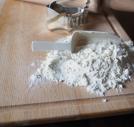Can Type 2 Diabetes Change to Type 1 Diabetes?
Although diabetes is common, many people who have been diagnosed do not completely understand how it develops or whether it is hereditary. Additionally, the fact that diabetes is broken down into two types creates more confusion for people. However, it is important to realize that type 1 diabetes and type 2 diabetes have many major differences, and one type cannot lead to the other.
How Does Type 1 Diabetes Develop?
Type 1 and type 2 diabetes have different causes. Type 1 diabetes is usually diagnosed in children and young adults. A person must inherit a predisposition to the disease, and something in his or her environment will trigger it, such as a virus. In most cases, people inherit risk factors from both parents. Only 5 percent of people with diabetes have this form of the disease.
Type 1 diabetes develops when antibodies destroy the cells in the pancreas that produce and secrete insulin. Usually the body produces these antibodies to defend itself from foreign bodies, but sometimes these same antibodies turn on a person's own body. In the case of type 1 diabetes, the antibodies target the pancreatic cells, resulting in a lack of insulin production in the pancreas. This lack of insulin production is one of the main differences between type 1 and type 2 diabetes. These antibodies can usually be identified through blood tests . Individuals who have this type of diabetes require insulin therapy.
How Does Type 2 Diabetes Develop?
Type 2 diabetes is the more common type of diabetes. Research shows that 90 percent of diabetics have type 2 diabetes. Adults who develop diabetes almost always develop this type. Type 2 diabetes is usually caused by the combination of genetic abnormalities, obesity, poor eating habits and other lifestyle factors.
Before people develop type 2 diabetes, they almost always have what is called "prediabetes.” This is when a person has blood sugar levels that are higher than normal, but not yet high enough to be diagnosed as diabetic. Unlike type 1 diabetes, if you are diagnosed with prediabetes you will not develop type 2 automatically. For many people with prediabetes, early treatment can return blood glucose levels to a normal range. This can be done through dieting and exercise to reach a healthy weight.
Individuals with type 2 diabetes do not require insulin at the time of diagnosis. When diabetes is in its early stages, the pancreas still has the capacity to produce insulin, although it is not a sufficient amount. Oral diabetic medication can be used to enhance insulin secretion from the pancreas or decrease insulin resistance in the body when a person is at this stage. As time passes, insulin injections become an absolute necessity for managing glucose levels because the pancreas will continue to lose the ability to produce and secrete insulin. Note that the use of insulin among type 2 diabetics does not mean that their diabetes has turned into type 1.
Genetics, Family History and Diabetes
Another big difference between type 1 and type 2 diabetes are the different genetic and family history factors that put someone at risk for developing either type. In the case of type 1 diabetes, people need to inherit risk factors from his or her parents. In other words, a person who has type 1 diabetes must have inherited genetic abnormalities that put him or her at risk for diabetes.
If both parents have type 1 diabetes, the risk of a child developing diabetes is between 1 in 10 and 1 in 4. Type 2 diabetes often runs in families because children learn bad habits such as poor diets and a lack of exercise from their parents. For this reason, it is important to teach your children to eat healthily and in moderation, to engage in exercise and to avoid obesity.
Sources: Diabetes.org and EveryDayHealth.com
Photo: Pexels



































